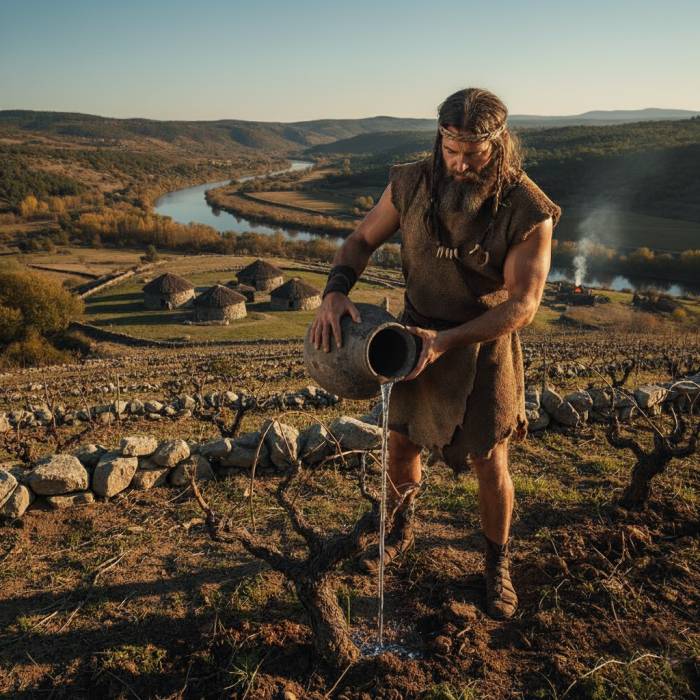Research reveals early societies invested in vineyards despite drought conditions
New analysis of charred plant remains shows grapes were favored even under water stress
2025-09-18

Recent research has revealed that ancient societies in the Middle East placed a strong emphasis on wine production, even during periods of significant climate change. A study published in PLOS One on September 17, 2025, led by Simone Riehl and colleagues from the University of Tübingen and Durham University, analyzed more than 1,500 charred plant remains from archaeological sites across the Levant and northern Mesopotamia. The samples, which included grape and olive seeds and wood, date from the Early Bronze Age to the Iron Age, spanning roughly 5,000 to 2,600 years ago.
The research team used stable carbon isotope analysis to assess water availability during the growth of these crops. This method allowed them to reconstruct ancient agricultural conditions and determine how farmers responded to environmental stress. The results show that during times of drought or fluctuating rainfall, ancient farmers prioritized grape cultivation over olives. Evidence suggests that irrigation was more frequently used for vineyards than for olive groves, especially from the Middle Bronze Age onward.
The study covered a wide geographic area, including present-day Lebanon, Jordan, Israel, Palestine, Syria, Turkey, and northern Iraq. By comparing isotopic data with reconstructed precipitation models, researchers found that grapes were often grown in regions with less natural rainfall. The presence of cultivated grapes in these drier areas indicates that irrigation systems were developed and maintained specifically for viticulture.
Analysis of the plant remains revealed that grape seeds consistently showed higher water use efficiency compared to olive stones. This difference is attributed to both physiological characteristics and agricultural practices. In particular, the data indicate that grapes received more consistent water supplies throughout the year—likely through irrigation—while olives were more dependent on seasonal rainfall.
The findings also highlight a shift in agricultural strategies over time. During the Early Bronze Age, both olives and grapes experienced significant water stress that matched seasonal variations in moisture. However, by the Middle Bronze Age and especially in the Iron Age, there was greater variability in water stress levels. Grapes began to be cultivated in areas previously considered unsuitable due to low rainfall, further supporting the idea of targeted irrigation.
The study’s authors note that these choices reflect not only environmental adaptation but also cultural and economic priorities. Wine held a special place in ancient societies for both ceremonial and commercial reasons. Archaeological evidence from sites such as Tel Kabri in Israel supports this conclusion: large storage vessels containing traces of wine additives have been found there, indicating large-scale production and storage.
Olive cultivation followed a different pattern. While olive trees are naturally drought-resistant and can survive with minimal rainfall, optimal fruit production requires higher moisture levels. The data show that olive orchards were generally located in regions with more favorable rainfall patterns during the Iron Age. In contrast to grapes, olives were less likely to be irrigated except during periods of extreme drought or when located in particularly arid zones.
The research also examined how major climatic events affected agriculture. Notable dry periods around 4,200 and 3,200 years ago corresponded with increased signs of irrigation for both crops at some sites. However, local responses varied widely depending on available resources and social organization.
Traditional farming methods recorded in historical sources provide additional context for these findings. In the Levant during the 19th and 20th centuries, cereal crops and olives dominated agriculture while vineyards occupied a smaller share of arable land. Ancient texts describe labor-intensive vineyard management practices—including soil preparation, pest control, and irrigation—while olive groves required less intervention.
The study’s results suggest that ancient farmers made calculated decisions about which crops to prioritize based on expected returns and resource availability. Grapes required more labor but offered higher economic value through wine production and trade. Olives provided dietary staples but were less intensively managed unless conditions demanded it.
This research challenges assumptions about ancient agricultural resilience and innovation. It demonstrates that early societies actively managed their environments using sophisticated techniques to ensure stable yields despite climate fluctuations. The commitment to wine production—evident through investment in irrigation infrastructure—reflects both cultural values and economic strategies that shaped settlement patterns and regional trade networks.
The project was funded by several European research bodies including the European Research Council and German Research Foundation. The interdisciplinary team included archaeologists and earth scientists who combined botanical analysis with climate modeling to reconstruct past human-environment interactions.
Their work underscores how issues such as resource allocation and climate adaptation have deep historical roots in human society. The evidence from Bronze and Iron Age Levant shows that ancient farmers were not passive victims of their environment but active agents shaping agricultural landscapes according to social needs and market demands.
Founded in 2007, Vinetur® is a registered trademark of VGSC S.L. with a long history in the wine industry.
VGSC, S.L. with VAT number B70255591 is a spanish company legally registered in the Commercial Register of the city of Santiago de Compostela, with registration number: Bulletin 181, Reference 356049 in Volume 13, Page 107, Section 6, Sheet 45028, Entry 2.
Email: [email protected]
Headquarters and offices located in Vilagarcia de Arousa, Spain.